10 Curiosities About Frogs
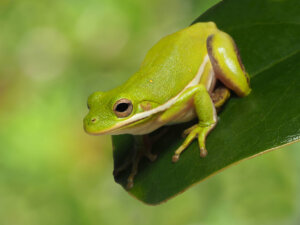

Written and verified by the biologist Samuel Sanchez
How many curiosities about frogs do you know? These amphibians, without a tail and with hind limbs developed for jumping, are very striking and have fascinated herpetologists since the beginning of biological studies. Their life cycle, the transition from tadpole to adult, and their cutaneous respiration are attributes that can’t be seen in other groups of vertebrates.
Apart from a frog’s physiology, there are many other curiosities about frogs. Some are capable of producing toxins, others are covered in wax to avoid losing moisture and others live their entire lives in water. If you want to get to know the most fascinating facts about this group of small vertebrates, we encourage you to continue reading.
1. Frogs account for the majority of amphibians
Frogs are anuran amphibians (Anura), and, as such, they form the class Amphibia along with caudates (salamanders and newts) and caecilians. Anurans differ from the rest by not having a tail in their adult phase and by having a flatter body plane, although there are certain exceptions.
The Anura order encompasses 88% of the more than 8000 species of amphibians that are distributed throughout the world. This adds up to about 7,100 frogs and toads, divided into 55 families. The Hylidae group is perhaps the most famous, as it includes many of the green tree frogs that we are used to seeing in documentaries, such as Hyla meridionalis.
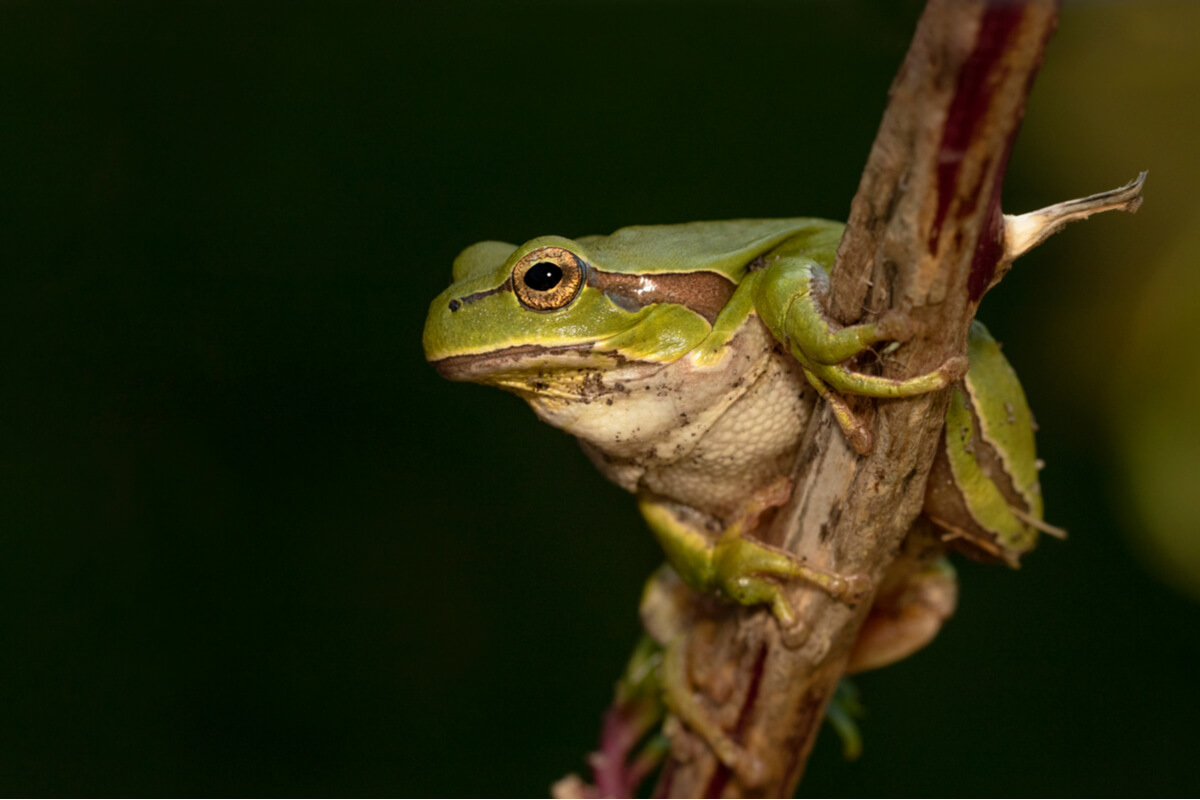
2. Frogs have exploited many niches
Members of the Anura order have displayed impressive distribution throughout their history. They can be found from the tropics to the sub-arctic regions, but every environment they inhabit must maintain 2 more or less constant characteristics: high/temperate temperatures and high relative humidity.
Frogs are ectothermic animals. They depend on the external temperature to modulate their own, and therefore can’t inhabit frozen regions.
3. Curiosities about frogs: they breathe through their skin
One of the curiosities about frogs that surely sounds familiar to you is that they’re able to breathe through their skin. Amphibian lungs are quite archaic and have very few internal septa, so the gas diffusion rate in these organs is low. Fortunately, as studies indicate, the skin is responsible for collecting up to 100% of the ambient oxygen in many cases.
This lining organ is full of respiratory capillaries and needs constant humidity to be able to perspire. Also, it should be noted that frogs can modulate the amount of blood that goes to the skin to some extent, so they can control how much they breathe through it.
4. Some frogs are very poisonous
Members of the Dendrobatidae family stand out for their ability to produce powerful toxins and for their very striking coloration. In general, these frogs have very garish base colorations (light blue, phosphor yellow and white) and disruptive black patterns. Their tones are aposematic, as they warn possible predators of their danger.
These amphibians secrete various lipophilic alkaloids, which are called batrachotoxins. These toxins prevent the transmission of the nerve impulse to the muscles after their ingestion, which causes cardiac hyperexcitability, seizures, paralysis, and death.
Dendrobates are believed to get their venom from their prey. Therefore, those that are kept in captivity aren’t dangerous.

5. Other frogs secrete waxes from their skin
Some monkey frogs (of the genus Phyllomedusa ) secrete a waxy substance that prevents the loss of water from their bodies through evaporation. If the environment is very dry, they begin to rub their limbs on their back (where the secretory glands are) and become covered with a fluid rich in lipids. These frogs live in the treetops, so they must protect themselves from dehydration.
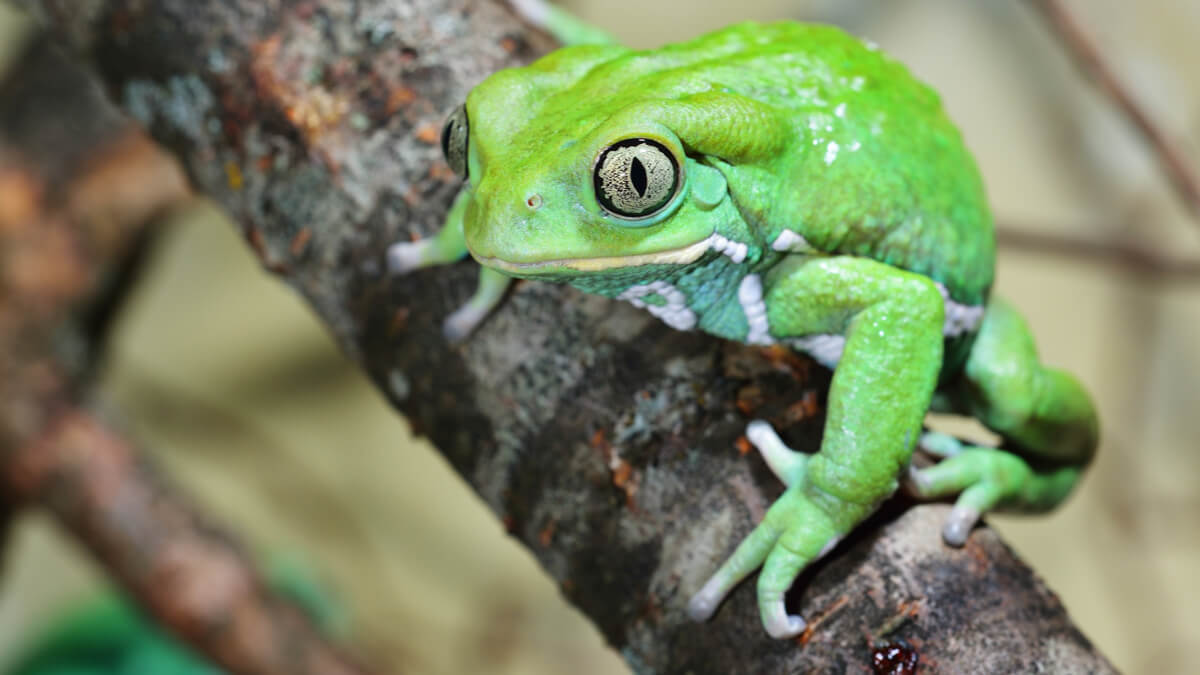
6. Frogs that don’t come out of the water
A curiosity that you surely didn’t know about frogs is that some of them spend their entire lives underwater. The genus Xenopus is the clearest example of this, as its most famous representative (Xenopus laevis) spends its entire life in the mud and perishable water sources. It has clearly adapted to it, as it has a sensory lateral line (like fish), a flattened body, and its legs are ready to swim.
These frogs’ eyes are in a dorsal position and can only look upwards. Its coloration is olive above and white below, perfect to blend in with the muddy bottom and the water column. Although they always live in water, they can withstand periods of desiccation by burying themselves in the wet mud.
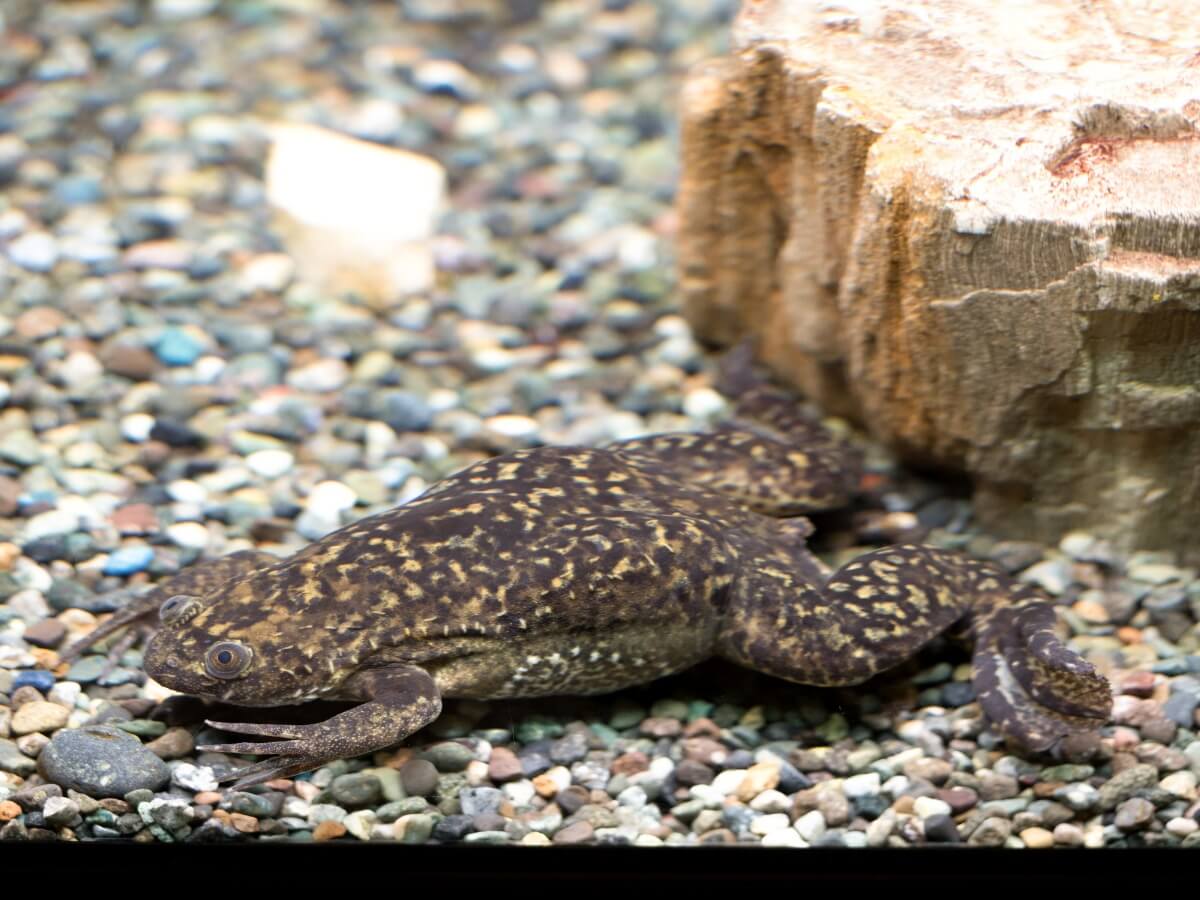
7. Frogs with a tail
The two species of frogs of the genus Ascaphus break the mold, as they’re the only anurans that have a kind of “tail” in their adult phase. In reality, this structure is an extension of the male’s cloaca, which inserts into that of the female at the time of copulation. It’s a very archaic and primitive feature, but it has its uses.
8. Some frogs have parental care
In the amphibian world, taking care of the young is unusual, as thousands of eggs are often released in reproductive events in which it isn’t clear who is the “father”. However, the males of the genus Alytes earn the position of being one of the best parents in the animal kingdom, as they carry the larvae until they hatch.
These wrinkled frogs are called “midwife toads” and it’s common to see males with a mass of eggs between their legs during the reproductive season. These intrepid amphibians seek out damp places to keep their young safe, and when they’re ready to hatch, they jump into the water and release them.
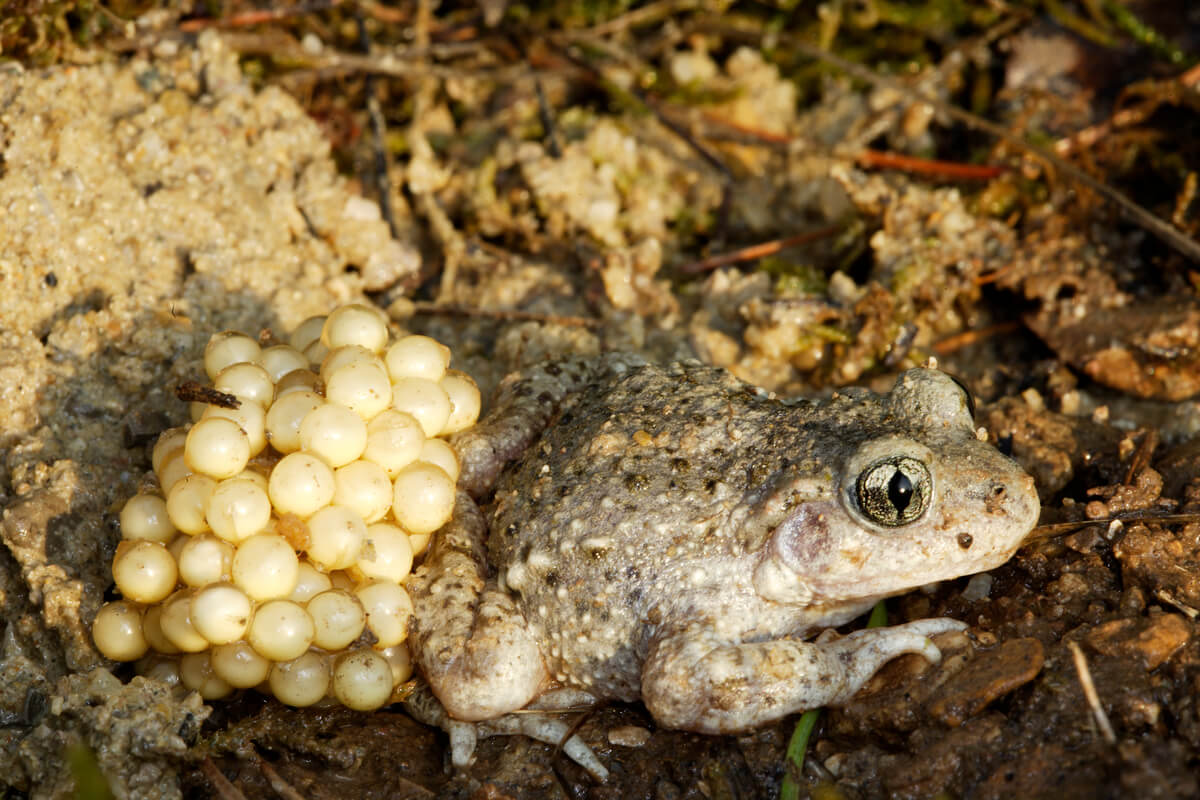
9. Toads and frogs are different, aren’t they?
Another remarkable curiosity about frogs (and amphibians in general) is that the distinction between “frog” and “toad” is often erroneous and lacks taxonomic interest. Frogs are said to be lighter, elongated, and have smoother skin, while toads are chubbier and rougher. These ideas aren’t supported by genetic studies.
In reality, the only “true toads” are those that belong to the Bufonidae family, especially those of the Bufo genus. There are very rough and terrestrial “frogs” and “toads” (such as the genus Atelopus ) that have completely smooth skin and a slender body. In the end, the only important and distinctive factor is that all these amphibians are anurans.
10. Frogs are in danger of extinction
Rather than a curiosity about frogs, this last fact emphasizes the need for action on the part of human beings when it comes to preserving biodiversity. As indicated by the Red List of the Union for Conservation of Nature (IUCN), 41% of the amphibians described are in danger of extinction and many are close to disappearing forever.
Water pollution, deforestation, the introduction of exotic species, and various diseases are decimating their populations. The parasitic chytrid fungus (Batrachochytrium dendrobatidis) is perhaps the greatest threat to this group, as it alone has decimated the populations of more than 500 species of amphibians.
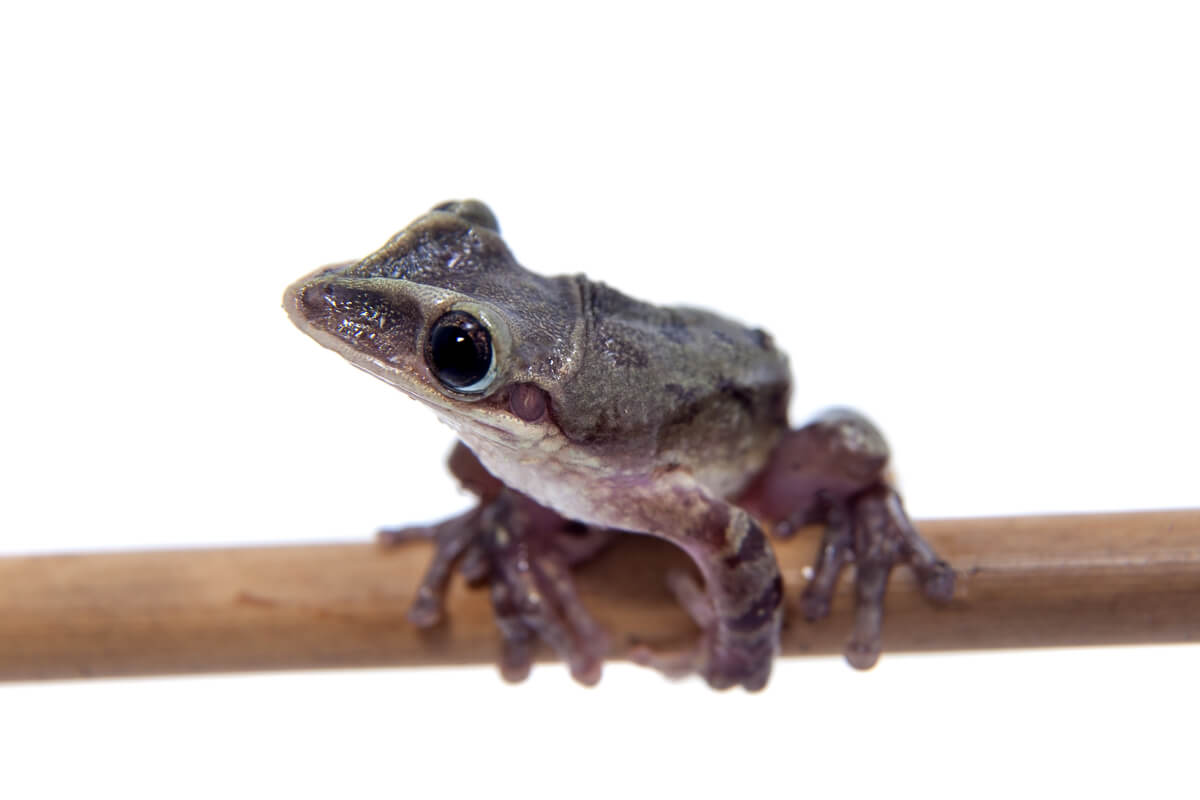
The curiosities about frogs are many and varied, but it’s very difficult to finish articles like this on a positive note. Amphibians are in danger and need our help. While there’s no real shift towards a more sustainable future, these and many more species will disappear forever.
How many curiosities about frogs do you know? These amphibians, without a tail and with hind limbs developed for jumping, are very striking and have fascinated herpetologists since the beginning of biological studies. Their life cycle, the transition from tadpole to adult, and their cutaneous respiration are attributes that can’t be seen in other groups of vertebrates.
Apart from a frog’s physiology, there are many other curiosities about frogs. Some are capable of producing toxins, others are covered in wax to avoid losing moisture and others live their entire lives in water. If you want to get to know the most fascinating facts about this group of small vertebrates, we encourage you to continue reading.
1. Frogs account for the majority of amphibians
Frogs are anuran amphibians (Anura), and, as such, they form the class Amphibia along with caudates (salamanders and newts) and caecilians. Anurans differ from the rest by not having a tail in their adult phase and by having a flatter body plane, although there are certain exceptions.
The Anura order encompasses 88% of the more than 8000 species of amphibians that are distributed throughout the world. This adds up to about 7,100 frogs and toads, divided into 55 families. The Hylidae group is perhaps the most famous, as it includes many of the green tree frogs that we are used to seeing in documentaries, such as Hyla meridionalis.

2. Frogs have exploited many niches
Members of the Anura order have displayed impressive distribution throughout their history. They can be found from the tropics to the sub-arctic regions, but every environment they inhabit must maintain 2 more or less constant characteristics: high/temperate temperatures and high relative humidity.
Frogs are ectothermic animals. They depend on the external temperature to modulate their own, and therefore can’t inhabit frozen regions.
3. Curiosities about frogs: they breathe through their skin
One of the curiosities about frogs that surely sounds familiar to you is that they’re able to breathe through their skin. Amphibian lungs are quite archaic and have very few internal septa, so the gas diffusion rate in these organs is low. Fortunately, as studies indicate, the skin is responsible for collecting up to 100% of the ambient oxygen in many cases.
This lining organ is full of respiratory capillaries and needs constant humidity to be able to perspire. Also, it should be noted that frogs can modulate the amount of blood that goes to the skin to some extent, so they can control how much they breathe through it.
4. Some frogs are very poisonous
Members of the Dendrobatidae family stand out for their ability to produce powerful toxins and for their very striking coloration. In general, these frogs have very garish base colorations (light blue, phosphor yellow and white) and disruptive black patterns. Their tones are aposematic, as they warn possible predators of their danger.
These amphibians secrete various lipophilic alkaloids, which are called batrachotoxins. These toxins prevent the transmission of the nerve impulse to the muscles after their ingestion, which causes cardiac hyperexcitability, seizures, paralysis, and death.
Dendrobates are believed to get their venom from their prey. Therefore, those that are kept in captivity aren’t dangerous.

5. Other frogs secrete waxes from their skin
Some monkey frogs (of the genus Phyllomedusa ) secrete a waxy substance that prevents the loss of water from their bodies through evaporation. If the environment is very dry, they begin to rub their limbs on their back (where the secretory glands are) and become covered with a fluid rich in lipids. These frogs live in the treetops, so they must protect themselves from dehydration.

6. Frogs that don’t come out of the water
A curiosity that you surely didn’t know about frogs is that some of them spend their entire lives underwater. The genus Xenopus is the clearest example of this, as its most famous representative (Xenopus laevis) spends its entire life in the mud and perishable water sources. It has clearly adapted to it, as it has a sensory lateral line (like fish), a flattened body, and its legs are ready to swim.
These frogs’ eyes are in a dorsal position and can only look upwards. Its coloration is olive above and white below, perfect to blend in with the muddy bottom and the water column. Although they always live in water, they can withstand periods of desiccation by burying themselves in the wet mud.

7. Frogs with a tail
The two species of frogs of the genus Ascaphus break the mold, as they’re the only anurans that have a kind of “tail” in their adult phase. In reality, this structure is an extension of the male’s cloaca, which inserts into that of the female at the time of copulation. It’s a very archaic and primitive feature, but it has its uses.
8. Some frogs have parental care
In the amphibian world, taking care of the young is unusual, as thousands of eggs are often released in reproductive events in which it isn’t clear who is the “father”. However, the males of the genus Alytes earn the position of being one of the best parents in the animal kingdom, as they carry the larvae until they hatch.
These wrinkled frogs are called “midwife toads” and it’s common to see males with a mass of eggs between their legs during the reproductive season. These intrepid amphibians seek out damp places to keep their young safe, and when they’re ready to hatch, they jump into the water and release them.

9. Toads and frogs are different, aren’t they?
Another remarkable curiosity about frogs (and amphibians in general) is that the distinction between “frog” and “toad” is often erroneous and lacks taxonomic interest. Frogs are said to be lighter, elongated, and have smoother skin, while toads are chubbier and rougher. These ideas aren’t supported by genetic studies.
In reality, the only “true toads” are those that belong to the Bufonidae family, especially those of the Bufo genus. There are very rough and terrestrial “frogs” and “toads” (such as the genus Atelopus ) that have completely smooth skin and a slender body. In the end, the only important and distinctive factor is that all these amphibians are anurans.
10. Frogs are in danger of extinction
Rather than a curiosity about frogs, this last fact emphasizes the need for action on the part of human beings when it comes to preserving biodiversity. As indicated by the Red List of the Union for Conservation of Nature (IUCN), 41% of the amphibians described are in danger of extinction and many are close to disappearing forever.
Water pollution, deforestation, the introduction of exotic species, and various diseases are decimating their populations. The parasitic chytrid fungus (Batrachochytrium dendrobatidis) is perhaps the greatest threat to this group, as it alone has decimated the populations of more than 500 species of amphibians.

The curiosities about frogs are many and varied, but it’s very difficult to finish articles like this on a positive note. Amphibians are in danger and need our help. While there’s no real shift towards a more sustainable future, these and many more species will disappear forever.
All cited sources were thoroughly reviewed by our team to ensure their quality, reliability, currency, and validity. The bibliography of this article was considered reliable and of academic or scientific accuracy.
- Silverstone, P. A. (1976). A revision of the poison-arrow frogs of the genus Phyllobates Bibron in Sagra (Family Dendrobatidae). Revisión de las ranas venenosas del género Phyllobates Bibron en Sagra (Familia Dendrobatidae). Natural History, 27, 1-53.
- Noble, G. K., & Putnam, P. G. (1931). Observations on the life history of Ascaphus truei Stejneger. Copeia, 1931(3), 97-101.
- Tinsley, R. C., & Kobel, H. R. (Eds.). (1996). The biology of Xenopus. London: Zoological Society of London.
- Dascal, N. (1987). The use of Xenopus oocytes for the study of ion channel. Critical Reviews in Biochemistry, 22(4), 317-387.
- Fabrezi, M., Quinzio, S. I., Manzano, A. S., & Abdala, V. S. L. (2013). Las ranas mono en Argentina.
- Vázquez, D., Vinke, T., & Vinke, S. (2011). Phyllomedusa sauvagii. La rana mono arborícola. Una especialista del Chaco Seco. Reptilia: revista especializada en reptiles, anfibios y artrópodos, (88), 43-49.
This text is provided for informational purposes only and does not replace consultation with a professional. If in doubt, consult your specialist.








